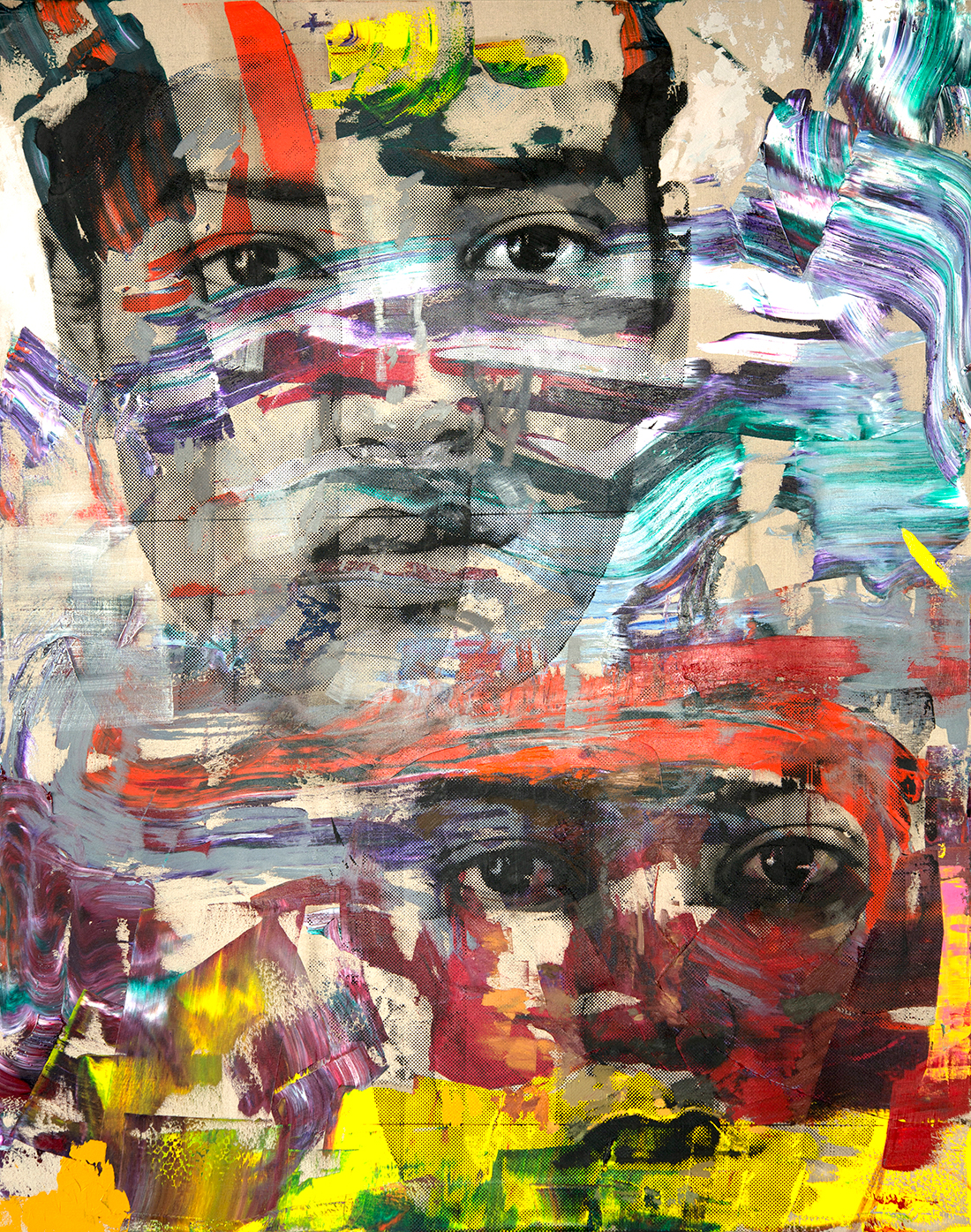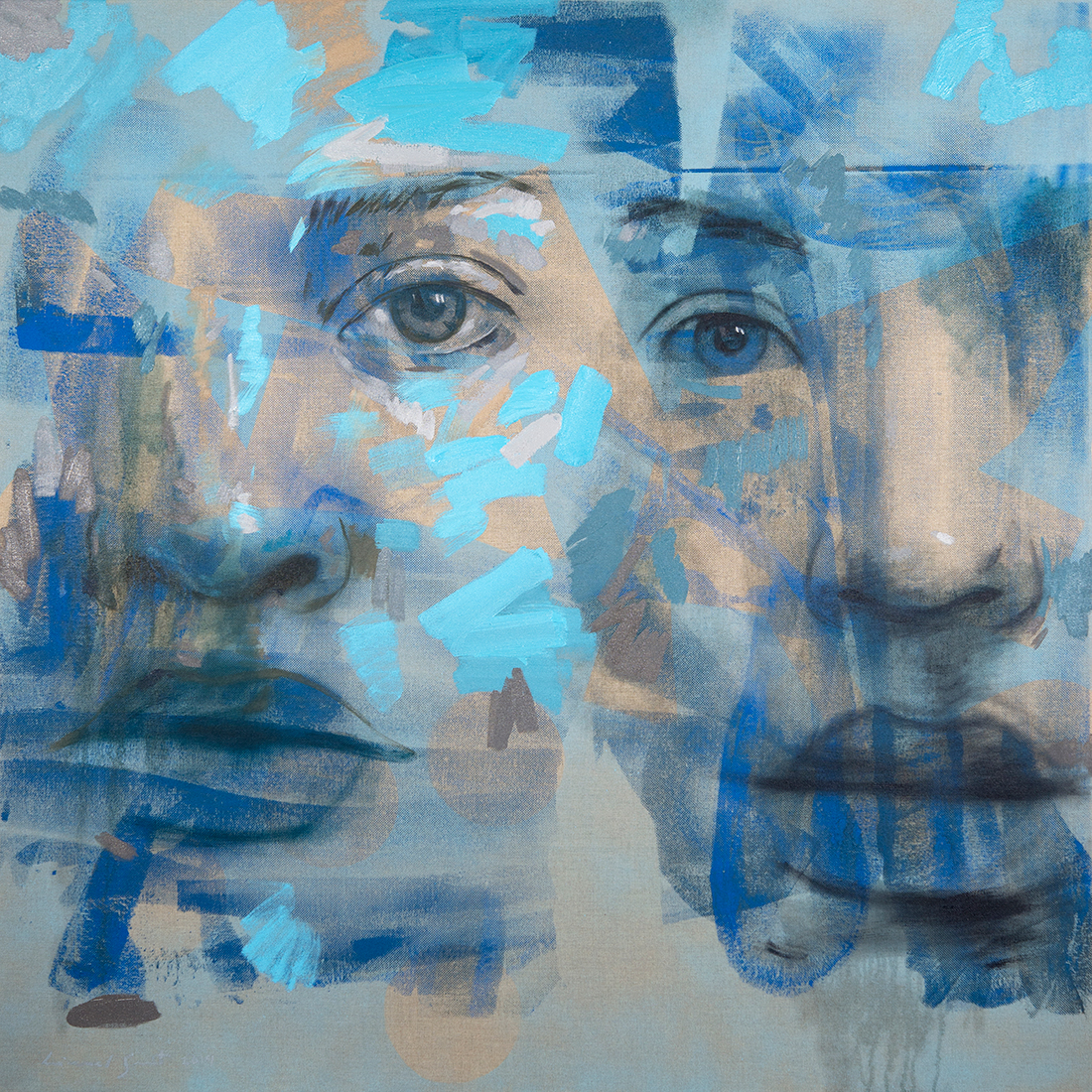—You’ve seen his work at the Grounds For Sculpture in New Jersey and at Union Square in Manhattan. Now world-renowned artist Lionel Smit is back with his latest abstract exhibition in Johannesburg.
The first time I spoke with Lionel Smit, we discussed his artistic aesthetic—more specifically, his sculpture work, which is loosely based around the idea of creating classical figurative forms in a new, contemporary way. Smit’s sculptures have been featured in public exhibitions around the world, including “MORPHOUS,” a double-headed bronze sculpture installed in Union Square, New York in June 2016 which is currently on display at the Grounds For Sculpture in New Jersey. But what I didn’t realize at the time, was that his approach to sculpture was heavily influenced by his painting process—adding layers to clay as you would paint to a painting.
This time, Smit returns with his latest series entitled “Manipulated Image,” an abstract collection of paintings influenced by technology—exploring how the digital age has influenced art and how we create it. Using a combination of silkscreen, oil layering and digital work, Smit’s creative process is very much an experimentation crossover of old and new mediums—an exploration of different and repeated imagery. Heralded for his contemporary portrayal of female subjects, “Manipulated Image” is both a call back to his dramatic portraits of anonymous women from the Cape Malay community and at the same time, a departure and entirely new multimedia horizon for the 37-year-old artist.
Smit’s own story is one of creative vision from a young age—the Pretoria-born artist was never formally trained save for his time at Pro Arte High School for the Arts. Growing up, Smit’s father, Anton, worked as a sculptor just a stone’s throw from their family’s home—a circumstance which no doubt left an impression. Today, he works from the comfort of his Cape Town studio and his work is revered by people all over the world. Smit draws inspiration from what lies beneath the surface of the everyday human face, reflecting themes of what he calls “the disintegrating construction of identity within our increasingly globalized world.”
Growing up, your father’s art studio was adjacent to your home. How did that jumpstart your creativity? Did you envision a career as an artist from an early age?
I think it played a major role and had a major influence on me that my father’s studio was adjacent to the home, as there was always creativity happening in my environment. Sculptures, paintings and drawings were constantly being made around me. There were always students and apprentices to my father in the studio—I think I drew from that energy. I don’t really remember deciding to become an artist from an early age, it was just something that was a part of our home and that I did. I went to an art high school because I loved creating, which eventually led to my becoming an artist. You could say I ended up doing what I knew best.
Your latest exhibition “Manipulated Image” explores how the digital age influences artists. What drew you to this idea?
I think the concept surrounding “Manipulated Image” and the idea of how the digital age has influenced artists is something that progressively grew from using computers and digital photographs in creating my works—on a very basic level, even. It is something that I suppose became apparent to me from the screen printing process, due to how I started using more digital procedures to achieve the final product. It evolved into a theme through these silkscreen preparations over the years. I realized that this forms part of a lot of artists’ processes, several artists have a digital influence in their work and I think I just wanted to bring that to the surface and emphasize that idea.
What was your creative process like? What were your go-to tools in creating this series?
My go-to in this series was mostly painting, then going back to silkscreening and doing some work digitally on an iPad or computer which I would then transfer to a more physical state like a silkscreen with oil paints. So there is definitely an amalgamation between the old and new mediums that I used. I have especially been using squeegees a lot, in the same way that one would use squeegees to spread the ink over the silkscreen I would rework the canvas surfaces with squeegees, palette knives and anything that I could get my hands on.
You’ve been recognized for your remarkable sculpture work—specifically for “MORPHOUS” a public installation in Union Square now on display here in New Jersey. Do you feel “Manipulated Image” is a sort of departure from some of your earlier works?
I think that “Manipulated Image” is definitely a departure from my earlier works, in particular with “MORPHOUS”, the sculpture that was placed in Union Square. I had an element of this theme come across in this sculpture since the initial idea came from a digital image that I duplicated and then mirrored. So the idea for the artwork sprung from a digital vision or rendering which I used to translate into a bronze which is more traditional.
 On the opposite note, all of your exhibitions have been very consistent with abstract female portraits. What is it about the female face that inspires your work?
On the opposite note, all of your exhibitions have been very consistent with abstract female portraits. What is it about the female face that inspires your work?
When I started painting, my influence was mostly classical Renaissance paintings and painters. I think the idea of using a female muse emerged from that period of my work. Painting many female portraits and nudes is something that I think stuck with me. I feel the female face translates the best with the abstract qualities of my artworks, that seem more masculine to me. I find the contrast between the masculine abstractions and soft feminine faces are a really good juxtaposition for the works.
What emotions do you want “Manipulated Image” to evoke in your viewers? What emotions does the exhibition evoke in you?
I think the idea is to incite people into seeing these manipulations and lead their focus to them. I have placed the emphasis on the process and making it physically visible on the canvas. I want the viewer to have a thought process questioning how someone would create this piece—to get a glimpse of how the digital age is so much a part of creating artwork these days. I don’t think people always know about the digital processes artists use, I think I want to embrace that. I don’t think I am trying to focus on trying to convey a particular feeling in my work, I suppose that just happens naturally.
You’ve gained international recognition and have been heralded as one of South Africa’s most talented creators. How do you define success as an artist?
Defining success as an artist is for me probably the fact that I can keep creating work and make a living from that. I don’t really know what success might mean for an artist, there are various degrees of that. But I think if I just keep doing what I am doing, I will be happy.
MORE Lifestyle STORIES
Get an inside vue on the latest in luxury. You heard it here first.






